.jpg)
.jpg)
Magic Shellfish, Tree-Healing and Computer-Vision.
The demand for wound care is at an all-time high, thanks to factors like the global prevalence of diabetes, an ageing/rising population and increased rates of obesity. Major investment has been pumped into this market and the global advanced wound care market it’s set to be worth $24bn by 2024.
While it’s exciting to see major medtech corporations expand their offerings into wound care, I’ve been most excited by some of the small/medium sized companies making a name for themselves with their quirky, innovative and important technology.
Magic Shellfish
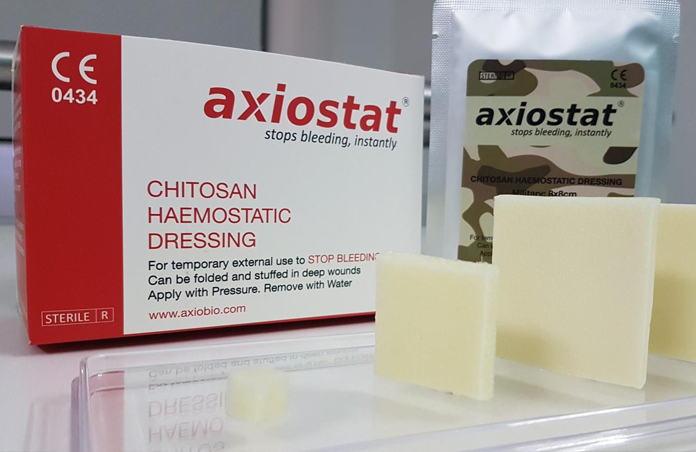 Fast-growing US medtech, Axio Biosolutions, has produced the world’s first bioadhesive haemostat dressing, Axiostat, which sticks to blood and tissue to act as a sealant. Axiostat can control moderate-to-profuse bleeding within minutes, meaning it can be used in cardiac surgery, armed conflict injuries, road traffic collision injuries and more.
Fast-growing US medtech, Axio Biosolutions, has produced the world’s first bioadhesive haemostat dressing, Axiostat, which sticks to blood and tissue to act as a sealant. Axiostat can control moderate-to-profuse bleeding within minutes, meaning it can be used in cardiac surgery, armed conflict injuries, road traffic collision injuries and more.
The product is made from modified Chitosan, which is a relatively new biomaterial in the market. Chitosan is manufactured by processing chitin shells of shellfish such as shrimp with alkaline substances like sodium hydroxide. Leo Mavely, CEO at Axio, explained that Axiostat’s Chitosan based hemostat make-up makes it as effective as other sealants at one third the cost.
Axiostat is popular with armed forces worldwide and used on the frontline by five. It is CE marked in 26 countries, has a strong presence in India and is expected to be launched in the US in 2021.
While US commercialisation of Axiostat will certainly be a big project, Leo was also keen to tell me about another problem Axio aims to tackle: India’s diabetic foot problem. Over 60m people have the disease in country and as a result almost 250,000 amputations happen each year.
Axio is aiming to combat the disease with another product called MaxioCel which is designed to heal patients suffering from chronic wounds by effectively managing exudates and pain relief. This more effective management of chronic wounds should reduce the amount of amputations happening.
Tree Healing
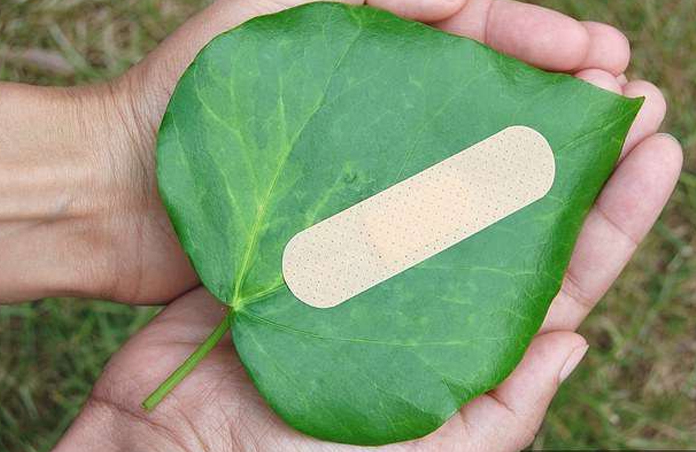 Axio isn’t the only company with impressive ethical goals. UPM Biomedicals develop and supply innovative and sustainable wood-based biomedical products for a variety of uses.
Axio isn’t the only company with impressive ethical goals. UPM Biomedicals develop and supply innovative and sustainable wood-based biomedical products for a variety of uses.
UPM Biomedicals uses nanofibrillar cellulose hydrogel as the key component in both Clinical and Life Science product ranges. It is highly biocompatible with human cells and tissues, but free from any animal or human-derived material.
Jane Spencer Fry, Director at UPM Biomedicals, told me that responsibility and use of sustainably sourced, renewable, raw materials are at the core of the company’s operations. She also highlighted that the company not only use wood, but plants over 50 million trees a year.
FibDex is the first clinical product to be launched by UPM Biomedicals, complementing the Life Science product ranges - GrowDex hydrogels for 3D cell culture and GrowInk bioinks for 3D bioprinting.
The advanced wound care dressing provides a moist environment for optimal healing and absorbs fluids from the wound. Only one dressing is required for the treatment as FibDex gradually peels away once the skin beneath has healed. This means improved efficiency for the hospitals, as nursing staff can allocate their time for other tasks instead of changing dressing. For patients, this means the recovery process will be less painful.
Clinical trials have reported the dressing to provide significant improvement in scar quality and vascularity. Patients also commented on its comfortableness. FibDex has a CE mark and Jane said that the company’s next step is to find distribution partners for the commercialisation of the product.
Computer-Vision
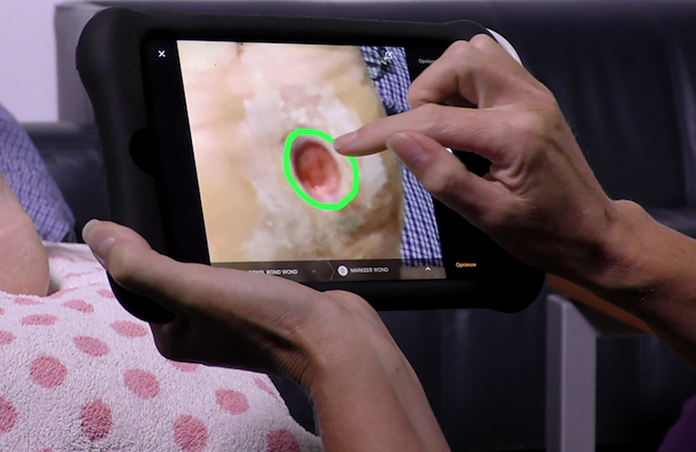 While UPM and Axio are offering solutions for wound care through their dressing solutions, some companies are improving bedside treatment through AI and other digital technologies.
While UPM and Axio are offering solutions for wound care through their dressing solutions, some companies are improving bedside treatment through AI and other digital technologies.
Woundworks are bringing diagnosis and treatment to the point of care, as European representatives and partners in the development of insight. inSight is a mobile platform which allows clinicians to capture and access patient data at the patient's bedside.
The system uses computer vision technology to capture surface topography and generate 3D reconstruction of a wound. This can all be done with a smart phone with data presented in visual dashboards that track healing progress. The trajectory of healing can be seen instantly, as well as the images and other data, assisting creation of more reliable and useful patient records.
This technology is considered a key development in helping promote better clinical decisions and improving the use of clinical resource.
This is a very interesting time for healthcare. Advances in consumer electronics, including the development of AR, is opening new possibilities in wound care.”
Kyle Wu, MD, Chief Medical Officer at eKare Inc. (Woundworks US Partner)
Innovations like these are crucial to keep-up with the global demand for wound care. However, this also needs to be complimented with investment. That’s why it’s great to see major medtechs present in the wound care market.
Global hygiene and health company, Essity, have a sales presence in over 150 countries and are responsible for big brand names like TENA and Tork, as well as others like Leukoplast, Libero, Libresse, Lotus, Nosotras, Saba, Tempo, Vinda and Zewa. While Essity aren’t yet a big player in wound care, their size and resources mean that they have the potential to have a big impact in the market.
The same goes for Geistlich Pharma AG, a family owned Swiss company with a history spanning over 160-years and mammoth sales presence. With a high value on efficacy, their biomaterials are documented in over 1,000 scientific publications and they are the global leader in the field of dental bone and soft tissue regeneration.
Geistlich Pharma AG’s plans to broaden the company’s advanced wound care offering is exciting, due to the resources at their disposal. They are currently making movement in the treatment area for diabetic feet with the Geistlich Derma-Gide in the US. And according to a pilot study, their advanced wound matrix combines excellent handling characteristics with a strong clinical performance. Further footsteps into the market would be big news, with their impressive reputation making them ones-to-watch at the top-end of the market.
It’s fantastic to see both big corporations and smaller players come together to support the wound care market. While innovative shellfish, tree-healing and computer-vision might be the technology that grabs everyone’s attention; I’m glad that larger companies are making their presence known in the market. Everyone has a huge role to play as the market combats the inevitabilities of an ever-increasing and ageing population.
Recommended.

What Does Consumer Neurotech Innovation Mean for the Medical Device Industry?
Integrating systems into the human brain to control our everyday devices may seem very ‘Black Mirror’, but thanks to modern neurotechnology it's quickly becoming reality. Click to find out more.
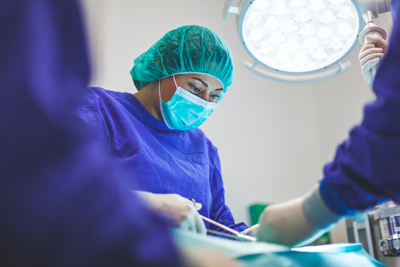
How to Master Reimbursement in Medical Devices & Biotech.
In this live webinar, hosted by CM Medical, we went in search of expert reimbursement advice - speaking to Deborah Rizzi and Steven Haken of Odelle Technology.
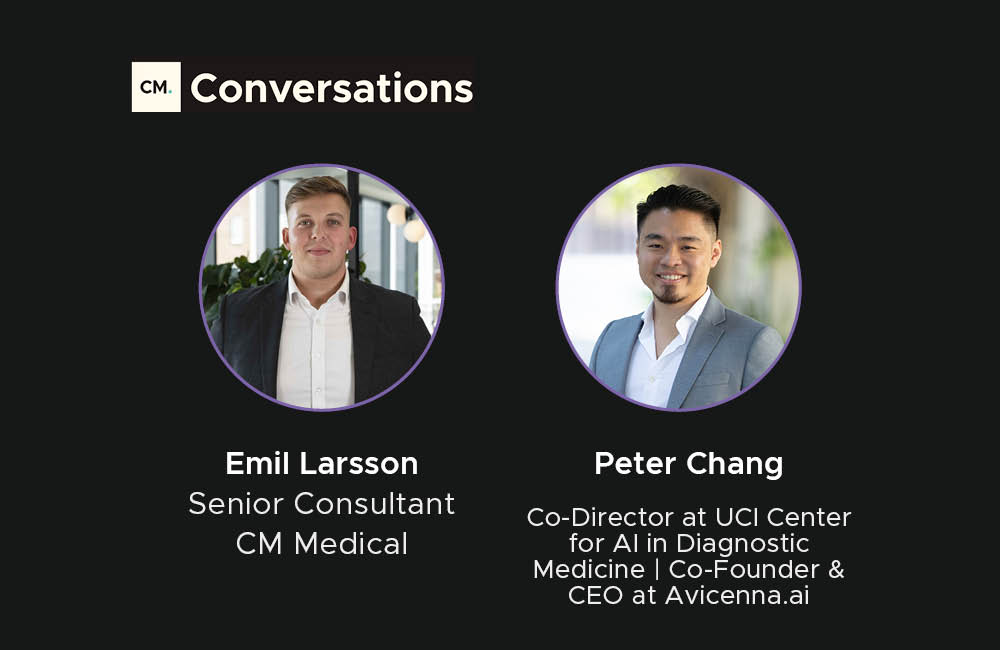
How to Stand Out in a Saturated AI & Medical Imaging Market.
We asked an expert at an innovative medical imaging start-up about how they had overcome this challenge. Click now and listen to what they said.
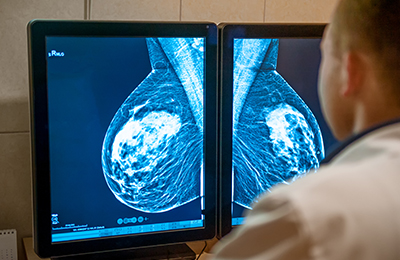
Comments.